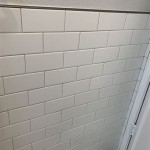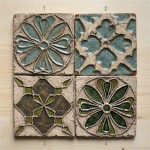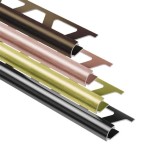The Beauty Of Mexican Talavera Tiles
Mexican Talavera tiles, a vibrant and historically rich art form, stand as a testament to the cultural fusion of indigenous traditions and European influences. Originating in Spain, the Talavera technique found fertile ground in Mexico, where it flourished and evolved into a distinct and globally recognized style. These hand-painted ceramic tiles are renowned for their intricate designs, bold colors, and the unique character imparted by the artisanal process. They are not merely decorative elements; they are storytellers, reflecting the history, beliefs, and artistic sensibilities of the regions where they are produced. From adorning colonial buildings to gracing contemporary homes, Talavera tiles continue to captivate with their timeless appeal.
The history of Talavera tiles in Mexico is intertwined with the arrival of the Spanish conquistadors in the 16th century. Alongside their military and political power, the Spanish brought with them various crafts and skills, including the art of tin-glazed earthenware. The city of Puebla, with its abundant clay deposits and access to established trade routes, quickly became a hub for Talavera production. Spanish artisans imparted their knowledge to indigenous craftsmen, who, while adopting the European techniques, infused the art form with their own cultural motifs and artistic expression. This blending of traditions resulted in a uniquely Mexican style of Talavera that continues to thrive today.
The process of creating authentic Talavera tiles is a meticulous and time-consuming endeavor, demanding both skill and patience. The process begins with the selection and preparation of the clay, which must be of high quality and free from impurities. Once the clay is properly prepared, it is molded into the desired tile shape, often by hand. The tiles are then left to dry, a crucial step that determines their durability and prevents cracking during subsequent firing. Following the drying process, the tiles undergo an initial firing, known as the bisque firing, which hardens the clay and prepares it for glazing.
The glazing process is where the magic of Talavera truly begins to unfold. A white tin glaze is applied to the bisque-fired tiles, providing a smooth and opaque surface upon which the intricate designs will be painted. The glaze is carefully applied to ensure an even coating, as any imperfections will be visible in the final product. Once the glaze is dry, the tile is ready for the application of the hand-painted designs.
The painting of Talavera tiles is a testament to the skill and artistry of the artisans. Using finely crafted brushes and mineral-based pigments, the artisans meticulously paint the designs onto the glazed surface. The colors are carefully selected to achieve the desired effect, and the designs often feature intricate floral patterns, geometric motifs, and scenes from daily life or religious iconography. The painting process requires a steady hand and a keen eye for detail, as any mistakes are difficult to correct. Once the painting is complete, the tiles are fired again at a high temperature, which vitrifies the glaze and permanently fuses the pigments to the surface. This final firing process not only gives the tiles their characteristic sheen but also makes them resistant to water and wear.
The Defining Characteristics of Mexican Talavera
Several key characteristics distinguish Mexican Talavera tiles from other ceramic tiles. The use of specific color palettes is a defining feature. Traditionally, Talavera tiles are characterized by the use of six primary colors: cobalt blue, yellow, black, green, orange, and mauve. These colors are derived from natural mineral pigments and are known for their vibrant and enduring quality. While other colors may be incorporated in contemporary designs, these six remain the hallmark of authentic Talavera.
Another defining characteristic is the hand-painted nature of the designs. Unlike mass-produced tiles that are often printed with patterns, Talavera tiles are individually painted by skilled artisans. This ensures that each tile is unique and possesses its own subtle variations, contributing to the overall charm and character of the finished product. The hand-painted nature of Talavera also allows for a greater degree of artistic expression, as artisans can incorporate their own personal touches into the designs.
The cultural motifs and symbolism present in Talavera designs also contribute to their unique character. The tiles often feature stylized representations of plants, animals, and human figures that are deeply rooted in Mexican culture and history. Pre-Columbian influences are often evident in the geometric patterns and stylized depictions, while Spanish colonial motifs are reflected in the use of religious iconography and European-inspired floral designs. These cultural motifs not only enhance the aesthetic appeal of the tiles but also serve as a visual reminder of the rich and complex history of Mexico.
Applications of Talavera Tiles in Architecture and Design
The versatility of Talavera tiles allows for a wide range of applications in both architectural and design projects. In traditional Mexican architecture, Talavera tiles are frequently used to adorn facades, patios, and interiors. They can be seen lining entire walls, decorating fountains, and adding colorful accents to doorways and windows. The tiles are particularly well-suited for use in outdoor spaces, as their durability and resistance to water make them ideal for withstanding the elements.
In contemporary design, Talavera tiles are increasingly being incorporated into a variety of settings, from kitchens and bathrooms to living rooms and outdoor entertaining areas. They can be used as backsplashes, flooring, accent walls, and even as decorative elements in furniture. The vibrant colors and intricate designs of Talavera tiles can add a touch of warmth, personality, and cultural flair to any space. Their use is not limited to Mexican-themed designs as they can be incorporated into Mediterranean, Spanish Colonial, and even eclectic interiors.
Furthermore, Talavera tiles are frequently used in public spaces, such as parks, plazas, and museums. They can be used to create murals, decorate benches, and add visual interest to architectural features. The use of Talavera tiles in public spaces not only enhances the aesthetic appeal of these areas but also serves to promote and preserve Mexican cultural heritage.
Preservation and Authenticity of Talavera Tiles
The increasing popularity of Talavera tiles has also led to concerns about the preservation of authentic production methods and the proliferation of imitation products. In order to protect the integrity of the art form, efforts have been made to establish standards and certifications for authentic Talavera tiles.
One of the key initiatives is the Denomination of Origin for Talavera (DOT), which was established in 1997 by the Mexican government. The DOT designates that only tiles produced in specific regions of Mexico, primarily Puebla and Tlaxcala, using traditional methods and materials can be officially labeled as "Talavera." This helps to ensure that consumers are purchasing genuine Talavera tiles that adhere to the highest standards of quality and authenticity.
In addition to the DOT, various organizations and artisans are working to promote the preservation of traditional Talavera techniques. This includes providing training and education to aspiring artisans, supporting the use of sustainable materials and practices, and raising awareness among consumers about the importance of purchasing authentic Talavera tiles. By supporting these efforts, consumers can contribute to the preservation of a unique and valuable cultural heritage.
Educating oneself on the characteristics of authentic Talavera is a crucial step in ensuring the preservation of the art form. Recognizing the color palette, the hand-painted nature of the designs, and the presence of cultural motifs are key indicators. Furthermore, verifying the origin of the tiles and looking for the DOT seal can help to confirm their authenticity. By making informed purchasing decisions, consumers can support the artisans who are dedicated to preserving the tradition of Mexican Talavera tiles and ensure that this beautiful art form continues to thrive for generations to come.

Blue White Ii Mexican Talavera Tile Collection Designs

Gold And Terra Cotta Mexican Talavera Tile Collection Designs

Mexican Tile Decorative Talavera

Box Of 100 Mexican Talavera Tiles Handmade Assorted Designs Ceramic 4x4 Inch

Genuine Mexican Talavera Tiles 4x4 Hand Painted Customize Your Walls Counter Tops Backsplash With Assorted Designs

Terra Tlaquepaque Talavera Mexican Tile Estancia Tiles

Traditional Mexican Tile Estrella De Mar Designs
Make Your Home Unique With Artis Mexican Talavera Tiles

Terra Tlaquepaque Talavera Mexican Tile Estancia Tiles

Blue Mexican Tile For Talavera La Fuente
Related Posts








